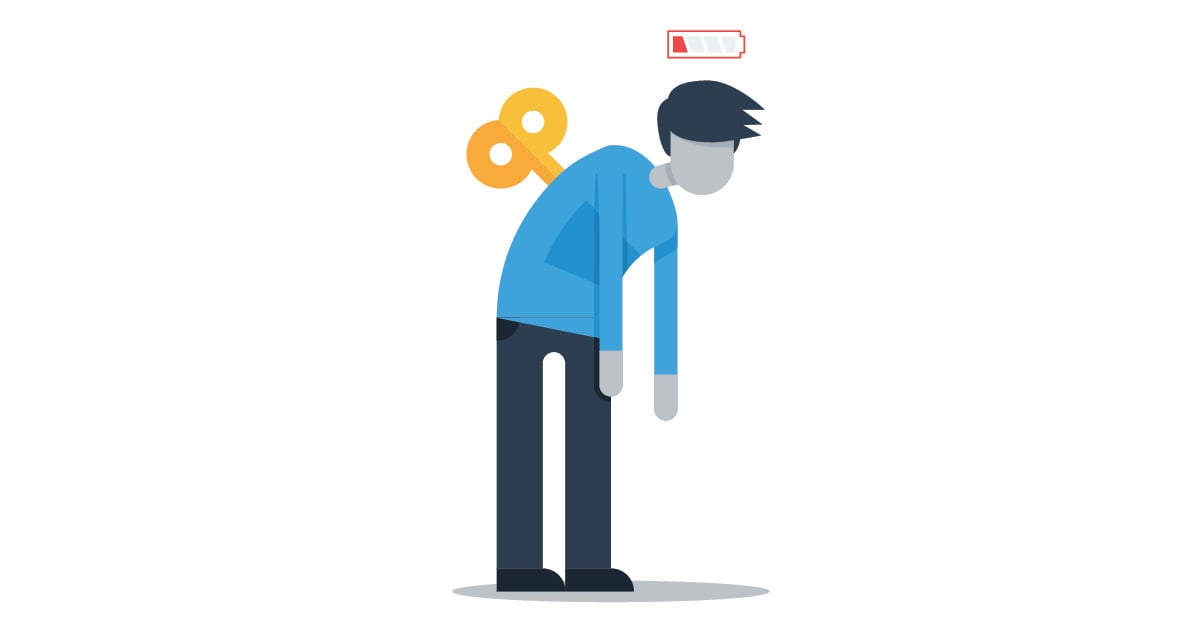
Lessons From Netflix
January 9, 2023
9 minute ReadBy Tom Gresham
Netflix has been in the headlines for the wrong kinds of reasons in 2022. The streaming service trailblazer announced in July that it had lost 1 million subscribers in the previous quarter, marking the first time in its history that it had lost subscribers in back-to-back quarters. The company also announced large layoffs in June and July.
The company once was unquestionably the giant in its field with few major challengers, enjoying the “first-mover” advantage as the first to embrace streaming content on a widespread scale. However, the streaming landscape has changed dramatically in recent years, leading to a crowded, highly competitive field of streamers.
In fact, Disney recently surpassed Netflix in total subscribers with its collection of streaming services (Disney+, Hulu and ESPN), marking the first time that Netflix was not a clear-cut No. 1. In addition to increased competition, among the other reasons cited for Netflix’s struggles is a possible subscription fatigue building among consumers.
Meanwhile, the car wash industry as a whole has found tremendous, ongoing success with the rise of the subscription membership model in its field.
“It’s mainstream,” said Ron Deimling, vice president of customer experience and marketing for GO Car Wash. “Everybody offers it. Everyone’s doing it. It’s definitely a huge leading point for every car wash operator to have some sort of subscription model in their arsenal … It’s a beautiful thing. It’s a huge value to the consumer, and it’s a great value to the operator.”
Netflix’s struggles and the saturation of the marketplace with subscription-based businesses across a wide variety of industries raise the question of if subscription fatigue is real — and if it could apply to the car wash industry one day.
Robbie Kellman Baxter, host of the “Subscription Stories” podcast and author of two books about the subscription business, “The Membership Economy” and “The Forever Transaction,” said subscription fatigue is a growing affliction for today’s customers in general. She believes that the abundance of choices, confusing pricing and, in some cases, manipulative subscription businesses are part of what causes the condition. In addition, she points to products that don’t justify subscription pricing. “Do you want to subscribe to a single book?” Baxter said. “Or be forced to subscribe to software you only use occasionally?
”Fatigue also can be associated with quality products that subscribers don’t use enough, making them feel guilty and causing them to associate all subscriptions with that guilt, Baxter said. Gym memberships that are never used and meal kits that never get eaten are two examples of subscriptions that can drive guilt. In addition, Baxter points to organizations that make it difficult to end a subscription — “hiding the cancel button,” she said — as playing a role in fatigue.
Deimling said the number of subscription options available across a wide range of products and services is amazing to see, but can be too much.“I think the notifications you get can be overwhelming. You’re almost having to spend a lot of time managing your subscriptions, but you purchased them in the first place to make your life easier,” he said.
Deimling said he hasn’t seen evidence of subscription fatigue in the car wash field, but he said he is beginning to hear it come up more frequently in conversation in the past six months than he has before.
“I do think there is fatigue in this subscription model overall,” Deimling said. “Do I think it’s in the car wash industry? Not as much as in other industries. I don’t think it’s nearly as bad as with Netflix and the other streaming services.”
Because of the presence of fatigue with other products and services, car washes must be careful not to be lumped in with subscriptions that do not offer sufficient value or that feel like a chore to keep.
“If you want to avoid driving subscription fatigue in your subscribers, make sure that the subscription offering makes sense for your customers. Does your subscription help your target audience achieve their desired ongoing outcome — a clean car in the most efficient way possible?” Baxter said. “Make sure they get the value they’re entitled to and help them recognize that value. And never ever hide the cancel button.”

Lessons from Netflix
Baxter said Netflix’s struggles and history as a pioneer in the subscription model field offer lessons “for nearly every subscription business,” though there are clear differences with the car wash field.
“It’s important to remember that there isn’t a subscription recipe,” Baxter said. “Netflix is about entertainment — car washes are about a necessary task on one’s to-do list. Netflix wants to maximize engagement — how frequently people return and how long people stay in each visit.”
A key parallel issue that Baxter noted that Netflix and car washes face is the challenge of differentiating oneself in the marketplace.
“One big challenge Netflix has faced over the past few years is that what was once highly differentiated [streaming content] is now a commodity — something every media company provides,” Baxter said. “So they are looking for new ways to differentiate, primarily through the content itself. Car washes, in some ways, might be perceived as commodities — same equipment, same result — and need to find ways to differentiate for a specific ideal member. Geography is a starting point, but different car washes might specialize in the level of detailing and white-glove service, family-friendliness or speed. Location might attract new subscribers, but you need to evolve from there to build a trusted ongoing relationship.”
Because customers have become so accustomed to car wash subscriptions, Deimling said it puts the onus on operators to come up with appealing ways to stand out in “a very competitive, growing environment.” Deimling said Netflix has been a wildly successful company that has continued to face growing competition year after year, making it more and more difficult for it to stand out.
“What they provide is content, but if you think about it, we provide content. We provide a product and a service,” Deimling said. “So, if you think you’re just going to win the war of just washing someone’s car, that is not a sound strategy. Retail consumers are becoming very discerning. They know what they want. They have a lot of options now in car washing — not just with express models like us, but there are convenience stores in the mix. There are automatics, Costco and even dealerships where you buy a car and then get lifetime car washes with that new vehicle. So you have to be thinking, what is it I can do to make sure that I am the car wash of choice? It’s about making people feel valued.”
Deimling said the widely reported issues that Netflix had with users sharing their password with others is a lesson for car washes. He said Netflix not putting more of an emphasis on halting the practice meant that they allowed a widespread problem to continue and potentially build.
“If you’re seeing something like that as an owner and operator — a recurring pattern — then you need to make sure you take a closer look,” Deimling said.
For instance, at an earlier position in his career, Deimling said the car wash encountered subscribers peeling RFID stickers off one vehicle and putting them on another vehicle to try to get two subscriptions for the price of one.
“We were adamant about placing those stickers on the vehicle very firmly so that couldn’t be done,” Deimling said.
Overall, Deimling said, Netflix offers an instructive lesson that success can be fleeting, no matter how solid the ground you are on appears to be. Improving, evolving and progressing are necessary to continue to thrive.
“Make sure you’re taking a proactive approach,” Deimling said. “I’m not saying that Netflix didn’t, but you have to be mindful of the competition at all times. There are so many more car washes on many streets now. What makes your experience stand out from the others?”

Metrics to Monitor
Deimling and Baxter pointed to a variety of metrics to monitor that could help diagnose growing subscription fatigue or slackening membership interest among customers.
For instance, usage reports are crucial to watch for warning signs of weakening subscription memberships, Deimling said. He said low-volume users are much more likely to drop their membership than those who come in three-to-four times a month. “We want to have that higher level of engagement as much as we can,” Deimling said. If a member is coming in frequently, he said, then they understand the value of the wash, and the wash has acquired “a lifestyle brand feeling” for the customer that gives the car wash deep roots, Deimling said.
“If we see people who are under that — who are just using it one-to-two times a month — then we try to reach out if we can and engage with them,” Deimling said.
Helping people use their membership is one of the important steps to helping them keep their membership. As Deimling noted, customers who cancel memberships often will cite that they were not washing their vehicles enough to keep them. Customers understand that they will “come out ahead” if they wash their vehicle a certain number of times a month, motivating them to use the wash and make it part of their routine, Deimling said.
Deimling said he tracks the customer acquisition cost for new members. If that cost is growing, then “we’re not putting out a compelling story about the value of membership” and need to adjust to better tell that story. Deimling also closely watches churn and speaks to staff members who are talking to customers — so he knows what they hear, among other signs.
Baxter noted that Netflix tracks not only what drives acquisition but what drives engagement and retention. Among the most important metrics to a subscription model is the customer lifetime value to customer acquisition cost ratio, she said.
“It’s really important that subscribers don’t just join — they have to stay,” Baxter said. “And engagement is often a predictor of retention. Recency, frequency, depth and breadth of usage are important to track.”
Baxter said churn typically is highest in the early periods of a subscription, with subscribers most likely to cancel in the first month, so a variety of metrics should be considered, or the numbers might prove misleading.
“If you don’t have any new subscribers in your base, your retention numbers will look better than if you’re actively acquiring new subscribers,” Baxter said.
Solidifying Your Membership Model
Baxter recommends a variety of steps to solidify your subscription model and your relationship with subscribers. To begin, “start with a forever promise” that emphasizes how you will help your ideal member “to achieve their ongoing goal or solve their ongoing problem,” she said.
Baxter also said operators should be clear on who their ideal member is.
“What is the difference between a great member, someone who gets and recognizes value from your offering and is willing to pay for it on an ongoing basis, and a ‘not great’ member, who cancels soon after joining, tries to game the system or complains all the time,” she said.
Based on your forever promise and ideal member, you can then optimize your offering while tracking a range of metrics, including acquisition, engagement and retention rates, customer acquisition cost, customer lifetime value and customer lifetime value-to-customer acquisition cost ratio, she said.
“Continue to iterate on your offering based on what you learn,” Baxter said. “For example, one car wash launched their subscription for people who washed their car frequently and were cost-sensitive, but found a subset of people were subscribing for a different reason — they liked being able to insert their member card and not have to interact with the cashier, even if they only washed their car occasionally.”
Deimling said the wide variety of subscription businesses in the United States right now means that car washes are not always just competing with other washes but with other subscription models “for the coveted consumer wallet space.”
“We have to make sure that we stand up and stand out,” Deimling said. “So we’re not the ones who, when times are tough — like they are right now — a customer says, ‘I am going to cancel that car wash membership because I’m just not washing enough.’ I think it’s going to force the car wash industry to be a little more innovative and creative in how we present the value in that subscription option.”
Ultimately, Baxter said, sophisticated systems are not the key to a successful subscription model.
“The most important thing is that you understand your audience and their behavior and optimize for their long-term well-being,” she said. “And you can do that just by watching, by asking good questions and by listening.”









